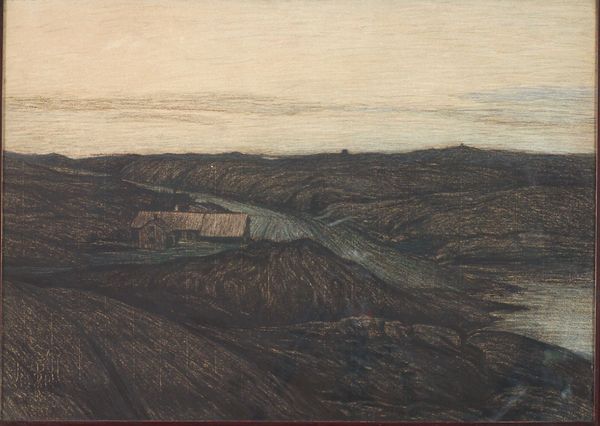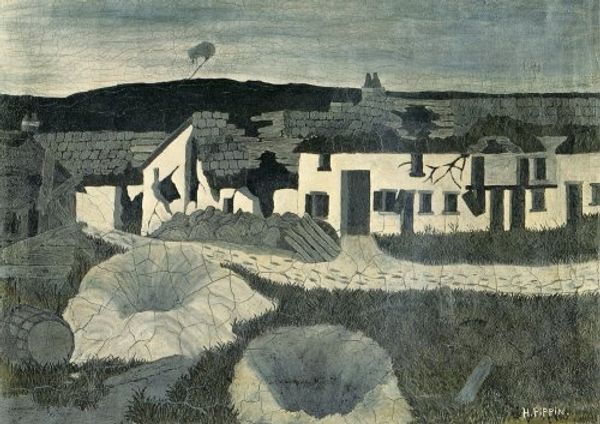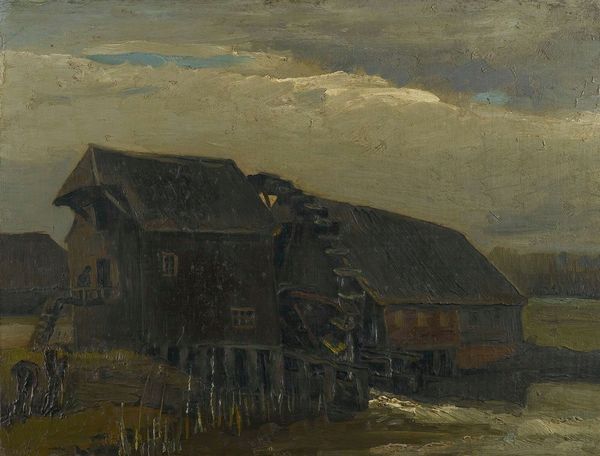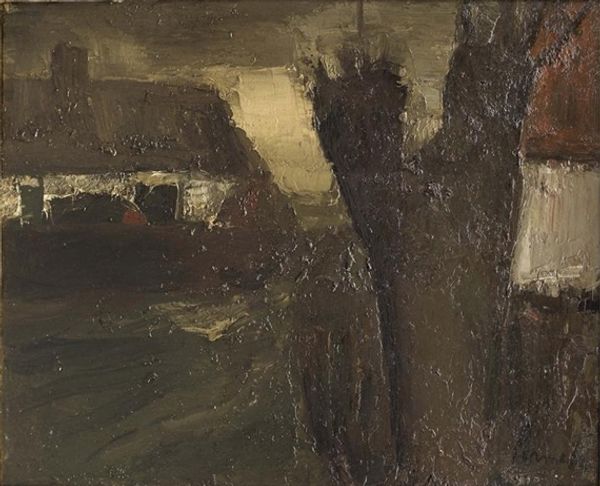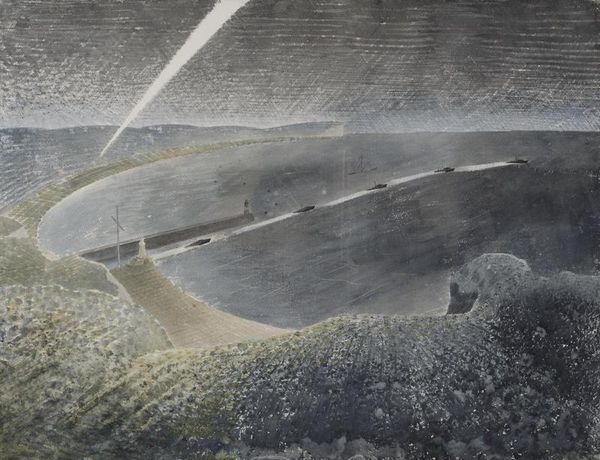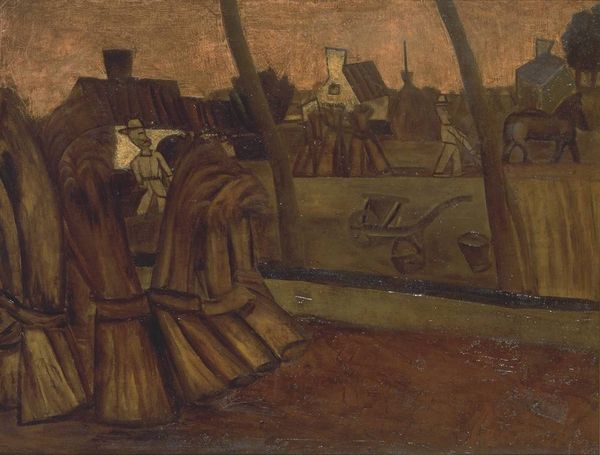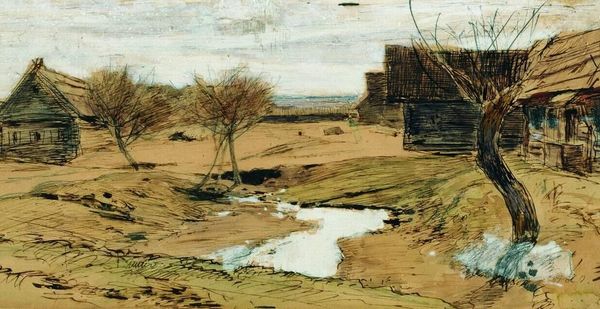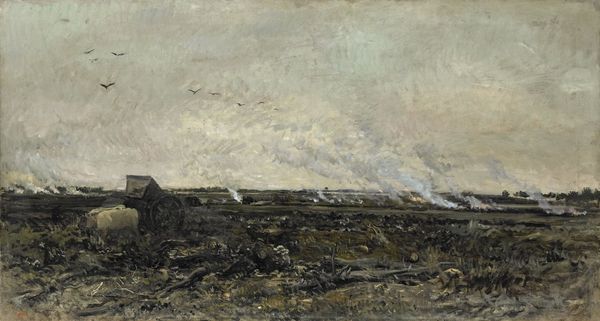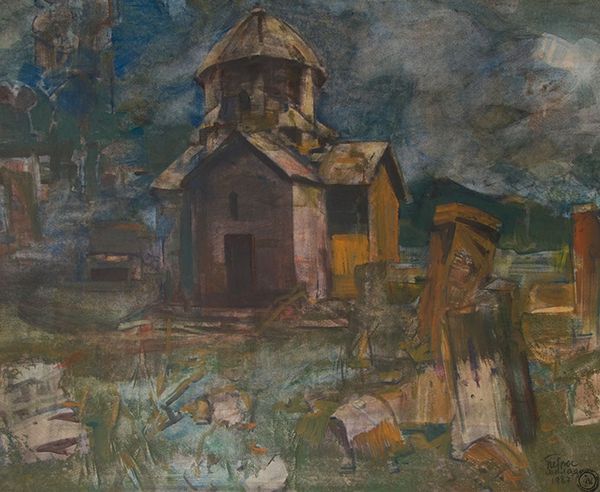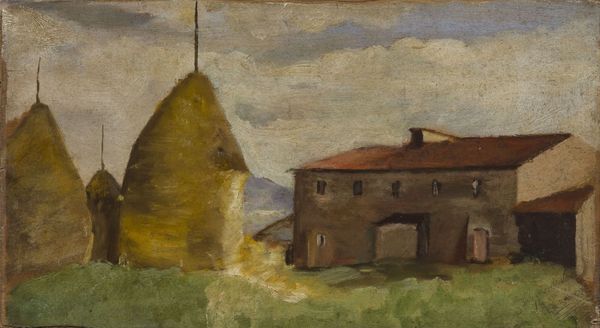
Dimensions: support: 686 x 762 mm
Copyright: CC-BY-NC-ND 4.0 DEED, Photo: Tate
Curator: Sir Charles John Holmes, who lived from 1868 to 1936, painted "The Burning Kiln," currently held in the Tate Collections. It's striking, isn't it? Editor: It's so austere. The muted palette emphasizes the heavy, geometric forms of the kiln. You can almost feel the weight of the materials. Curator: Holmes, as a director of the National Gallery, understood the power of public art. He sought to depict industry, a prominent fixture in the socio-economic landscape. Editor: Right, and you see that emphasis on the industrial process. The textures suggest the grit and labor involved in brickmaking. The kiln dominates, representing mass production. Curator: It does present a romantic yet bleak view of industrialization. It highlights how the means of production, like this kiln, transform the natural environment. Editor: It's thought-provoking to consider how the labor of firing these kilns influenced local economies and communities, even as the materials themselves altered the landscape. Curator: The painting offers a critical commentary on the social role of industry, doesn't it? Editor: Absolutely. The materiality and process are so tied to community and place. Curator: Considering the imagery and Holmes' role within the art world, it offers us insight into the politics of representation. Editor: Seeing the materials and means of production, it helps me remember the people behind it.

